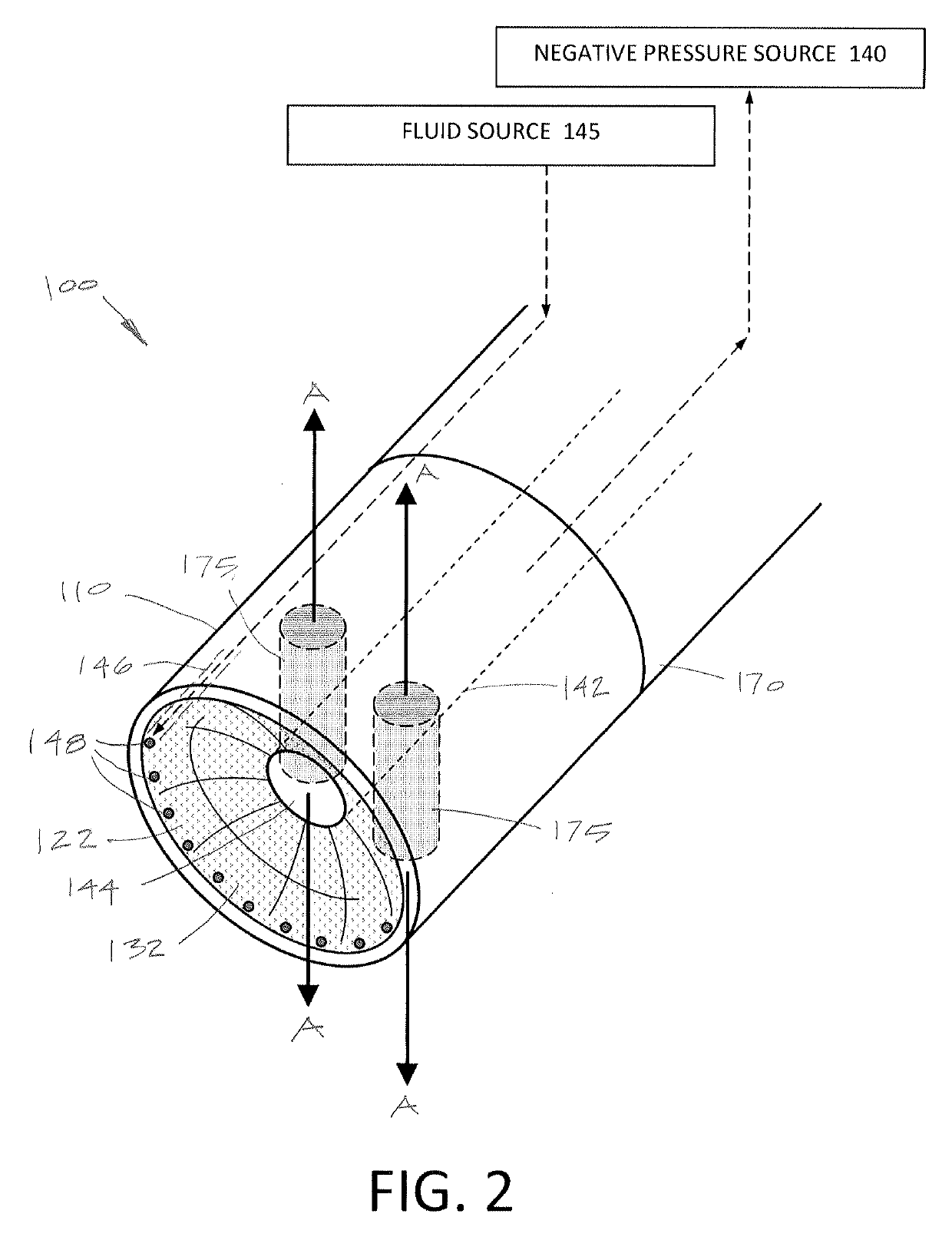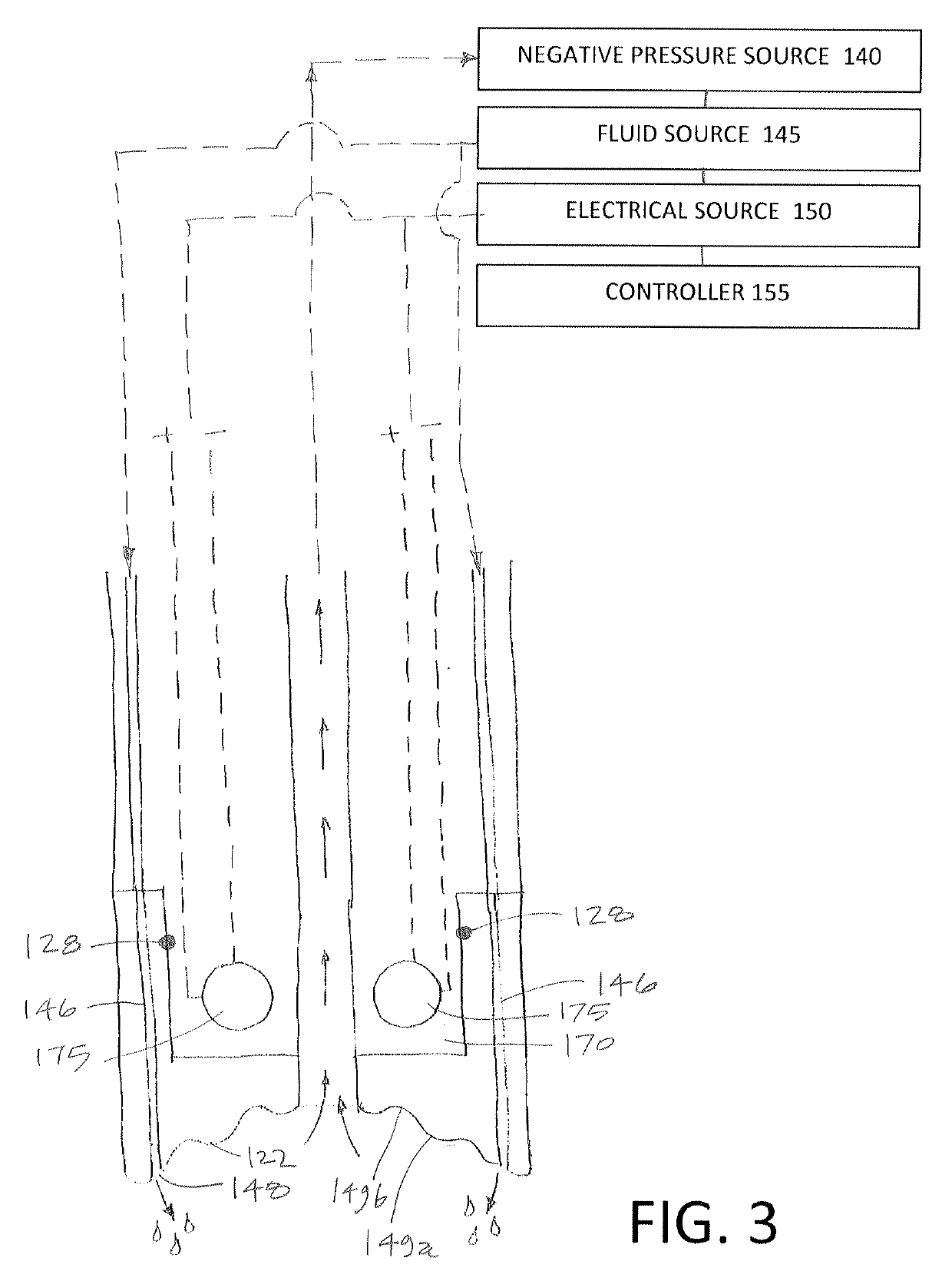Fluid skin treatment systems and methods
a skin treatment system and fluoride technology, applied in the field of dermatology, can solve the problems of scarring, increased skin layer growth, and ineffective superficial exfoliation in treating many forms of damage to the skin, and achieve the effects of improving absorption of topical skin treatment products, reducing scarring, and reducing scarring
- Summary
- Abstract
- Description
- Claims
- Application Information
AI Technical Summary
Benefits of technology
Problems solved by technology
Method used
Image
Examples
Embodiment Construction
[0042]FIGS. 1 and 2 illustrate an embodiment of the invention wherein the fluid skin treatment system 50 includes a treatment device 100 comprising a hand held unit with an elongated shaft or body 105 that can be gripped by the operator's hand and a working end or applicator tip portion 110 with a skin contact surface 122 configured to engage a patient's skin 124 (FIG. 1). The body 105 can have any suitable dimension along axis 111 and any shape suited for gripping with a human hand or fingers, and the surface area of the skin contact surface 122 can range from about 20 mm2 to 100 cm2. Devices with smaller dimension skin contact surfaces 122 are suited for treating facial skin, and the larger skin contact surfaces 122 are adapted for treating a patient's torso, arms or legs. In one variation described below, a practitioner may use a large surface area device (see, e.g., FIG. 6B) to treat a skin of a patient's arms, legs, torso or back in a form of fluid infusion into the epidermis, ...
PUM
 Login to View More
Login to View More Abstract
Description
Claims
Application Information
 Login to View More
Login to View More - R&D
- Intellectual Property
- Life Sciences
- Materials
- Tech Scout
- Unparalleled Data Quality
- Higher Quality Content
- 60% Fewer Hallucinations
Browse by: Latest US Patents, China's latest patents, Technical Efficacy Thesaurus, Application Domain, Technology Topic, Popular Technical Reports.
© 2025 PatSnap. All rights reserved.Legal|Privacy policy|Modern Slavery Act Transparency Statement|Sitemap|About US| Contact US: help@patsnap.com



